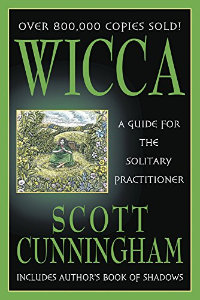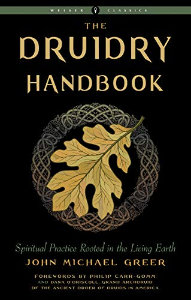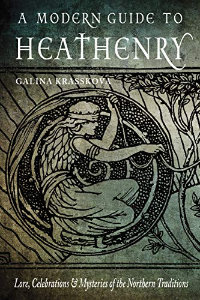
In a world filled with diverse spiritual practices, one path stands out for its ancient roots and mystical allure – Modern Paganism. Often misunderstood and surrounded by misconceptions, Paganism is a vibrant and evolving belief system that honors nature, celebrates polytheism and embraces personal spiritual experiences. In this comprehensive guide, we will delve into the depths of Modern Paganism, exploring its origins, diverse traditions, and the core principles that shape its followers’ lives. So, let’s embark on a journey of discovery, shedding light on the mysteries of this ancient path.
The Origins of Paganism
To understand Modern Paganism, we must first explore its historical roots. The term “Pagan” derives from the Latin word “pāgānus,” meaning “related to the countryside” or “rural.” Originally used by the early Christian Church to describe non-Christian practices, the word gradually evolved to encompass a wide range of non-Abrahamic religions. These included ancient European paganisms, such as the Greek, Roman, Celtic, and Norse traditions, as well as indigenous practices from around the world.
The Diversity of Modern Paganism
Modern Paganism is characterized by its rich diversity, with practitioners drawing inspiration from various ancient traditions and creating their own unique paths. While it is impossible to provide an exhaustive list of all Pagan traditions, we will explore several major ones to provide a glimpse into the vibrant tapestry of Modern Pagan practice.
Wicca: A Path of Witchcraft and Goddess Worship
Wicca is a modern pagan religion that draws inspiration from pre-Christian European religions. Wicca is commonly referred to as witchcraft or the craft, and its followers are often called witches. Wicca is a diverse religion, with no centralized governing body or holy book. Instead, Wiccans base their practices on ritual and direct spiritual experience.
The origins of Wicca can be traced back to the 1950s, when British civil servant Gerald Gardner introduced the religion to the public. Gardner claimed that Wicca was an ancient religion that had survived underground for centuries. However, there is little evidence to support this claim, and most scholars agree that Wicca is a modern invention.
Despite its relatively recent origins, Wicca has become one of the fastest-growing religions in the world. Its emphasis on personal experience and direct connection with the divine has attracted many people who feel disillusioned with traditional religions.
Wiccans believe in a duotheistic deity, which is often represented as a god and a goddess. The god and goddess are seen as complementary, and both are necessary for the balance of the universe. Wiccans also believe in the existence of other spiritual beings, such as fairies and spirits of the dead.
Wiccans celebrate the seasonal changes of nature through yearly rituals known as sabbats. There are eight sabbats in total, which mark the solstices, equinoxes, and cross-quarter days. The sabbats are celebrated with feasting, dancing, and spellcasting.
Magic is an integral part of Wiccan practice. Wiccans believe that magic is a way to heal and empower practitioners, but it must not cause harm. Wiccans also believe in the concept of karma, which states that the energy you put out into the universe will come back to you.
The religion incorporates an ethical code known as the Wiccan Rede. The Rede states, “An it harm none, do what ye will.” This means that Wiccans are free to do as they please, as long as it does not harm anyone or anything.
The Wiccan Rede is often interpreted as a call to environmentalism and social justice. Many Wiccans see themselves as stewards of the earth and work to protect the environment. Wiccans also believe in the importance of personal responsibility and respect for others.
Wicca has faced a great deal of persecution over the years. In the past, witches were often accused of practicing black magic and were punished with torture and death. Today, Wiccans still face discrimination and misunderstanding, but their religion is recognized as a legitimate faith in many countries.
Despite the challenges, Wicca continues to grow and evolve. Today, there are many different traditions and branches of Wicca, each with its own unique practices and beliefs. Some Wiccans choose to work in covens, while others practice alone. Many Wiccans also incorporate elements from other spiritual traditions into their practice.
Druidry: Reconnecting with Celtic Spirituality
Druidry is a spiritual practice that traces its roots to ancient Celtic culture. It is a nature-based religion that emphasizes reverence for the natural world and the interconnectedness of all things. Druids are known for their close relationship with nature, their deep knowledge of the natural world, and their use of rituals and ceremonies to honor the changing seasons and cycles of life.
The origins of Druidry are shrouded in mystery, but it is believed to have developed among the ancient Celtic peoples of Ireland, Britain, and Gaul. Druids were the religious leaders of these communities, serving as priests, poets, and advisors to kings and chieftains. They were renowned for their wisdom, knowledge of the natural world, and their ability to communicate with the spirits of the land.
The basic beliefs of Druidry revolve around the idea that all things are connected and that everything has a spirit or essence that should be respected and honored. Druids also believe in the power of ritual and ceremony to connect with the spiritual realm and to bring about positive change in the world.
One of the key concepts in Druidry is the idea of the Three Realms, which include the upper world (the realm of the gods and spirits), the middle world (the realm of humans and animals), and the lower world (the realm of the ancestors and the dead). Druids believe that these realms are interconnected and that they must work to maintain balance and harmony between them.
Druidry also emphasizes the importance of living in harmony with the natural world and of developing a deep connection with the land. This includes a reverence for the cycles of nature, such as the changing seasons, the phases of the moon, and the movements of the stars.
In addition to their spiritual beliefs, Druids also have a system of grades that reflects their level of knowledge and expertise. These grades include the Bard, the Ovate, and the Druid.
The Bard is the first grade and is focused on creativity and the arts. Bards are poets, musicians, storytellers, and artists who use their talents to celebrate the natural world and to inspire others.
The Ovate is the second grade and is focused on healing and divination. Ovates are skilled in the use of herbs and other natural remedies, as well as in the art of divination (the ability to communicate with the spiritual realm).
The Druid is the highest grade and is focused on leadership and wisdom. Druids are the spiritual leaders of the community and are responsible for guiding others on their spiritual journey. They are also skilled in the art of ritual and ceremony and play an important role in maintaining the balance and harmony of the Three Realms.
Overall, Druidry is a rich and complex spiritual practice that emphasizes the importance of living in harmony with the natural world and of developing a deep connection with the land. It is a practice that has deep roots in ancient Celtic culture and that continues to inspire and guide people today.
Heathenry: Honoring the Gods of the Norse
Heathenry, also known as Germanic Neopaganism, is a religious movement that seeks to revive the religious practices of pre-Christian North European peoples. Modern Heathen groups around the world are reviving these practices and work to build healthy relationships with gods, goddesses, ancestors, spirits of the land, and others in their communities. Heathenry is polytheistic and recognizes a large number of gods and other spiritual entities, and respect for ancestors is also important. There are no central authorities or widely recognized priesthood in Heathenry, and many belong to small groups made up of Heathen friends.
Heathenry is a polytheistic religion, which means that it recognizes many gods and goddesses. The gods and goddesses of Heathenry are seen as powerful spiritual entities that have the ability to influence the world and the lives of humans. These gods and goddesses are seen as having different areas of influence, such as Thor, the god of thunder, and Freyja, the goddess of love and fertility.
Heathenry also places a strong emphasis on the importance of ancestors. Ancestors are seen as being important spiritual figures that can aid and guide the living. Heathens often honor their ancestors through rituals and offerings, such as pouring out a libation or offering food or drink. Some Heathens also believe in the existence of land spirits and other spiritual entities that inhabit the natural world.
The history of Heathenry goes back to the pre-Christian religions of the Germanic peoples. These religions were polytheistic and recognized many gods and goddesses. These religions were also closely tied to the natural world and recognized the importance of ancestors and spirits of the land.
With the spread of Christianity throughout Europe, the old pagan religions were slowly replaced by the new religion. However, some aspects of the old religions persisted, particularly in rural areas where the old ways were still practiced.
In the 19th century, there was a renewed interest in the old pagan religions of Europe. This interest was fueled by the emerging fields of folklore and anthropology, which sought to document and preserve the traditions of the past. This interest in the old religions continued into the 20th century, and in the 1970s, a revival of Heathenry began in the United States.
Today, Heathenry is practiced around the world, with many different groups and organizations dedicated to the revival of the old pagan religions. These groups often draw on historical sources, such as the Icelandic sagas and the Eddas, to reconstruct the old religions.
Heathenry is a religion that places a strong emphasis on ritual and practice. These rituals and practices are seen as a way to build relationships with the gods and goddesses, as well as with ancestors and other spiritual entities.
One of the most common rituals in Heathenry is the blót, which is a ritual sacrifice. The sacrifice can be an animal, such as a goat or a pig, or it can be a symbolic sacrifice, such as pouring out a libation of mead or other drink. The sacrifice is seen as a way to offer something of value to the gods and goddesses, and to build a relationship with them.
Another important part of Heathenry is the use of runes. Runes are a set of symbols that were used in the old pagan religions of Europe for writing and divination. Today, many Heathens use runes for divination or as a way to connect with the gods and goddesses.
Eclectic Paganism: Embracing Personal Paths
Eclectic Paganism is a spiritual path that has gained popularity in recent years due to its highly individualistic nature. Unlike other religions, Eclectic Paganism allows individuals to create their own unique theology by borrowing beliefs and values from various Pagan traditions. In this article, we’ll explore the history of Eclectic Paganism and its common practices.
Eclectic Paganism is a relatively new spiritual path that emerged in the 20th century. It is a combination of different Pagan beliefs and practices, including Wicca, Druidry, Shamanism, and other nature-based religions. The term ‘Eclectic’ refers to the fact that practitioners of this spiritual path pick and choose from different traditions to create their own unique spirituality.
The earliest example of Eclectic Paganism can be traced back to the 1960s and 1970s, when Wicca began to gain popularity in the United States and Europe. Wicca is a modern form of Paganism that was created by Gerald Gardner in the 1950s. It is a nature-based religion that focuses on the worship of a goddess and a god, and the practice of magic.
However, not everyone who was interested in nature-based religions wanted to follow a strict set of rules and beliefs. Many people began to explore other Pagan traditions and combine them with the practices of Wicca. This led to the emergence of Eclectic Wicca, which is a form of Wicca that allows practitioners to pick and choose from different traditions.
Over time, Eclectic Wicca evolved into Eclectic Paganism, which is now a distinct spiritual path in its own right. Today, there are thousands of people around the world who identify as Eclectic Pagans.
One of the defining features of Eclectic Paganism is its highly individualistic nature. Practitioners of this spiritual path are encouraged to create their own unique theology by borrowing beliefs and practices from different Pagan traditions. However, there are some common practices that are shared by many Eclectic Pagans:
Eclectic Pagans believe that nature is sacred and should be respected and revered. Many practitioners of this spiritual path spend time in nature, and use the natural world as a source of inspiration and guidance.
Many Eclectic Pagans practice magic, which is seen as a way to connect with the divine and to manifest positive change in the world. Magic can take many forms, from spells and rituals to meditation and visualization.
Eclectic Pagans often perform rituals and ceremonies to mark important events and to connect with the divine. These can range from simple ceremonies to complex rituals involving multiple people.
Eclectic Pagans may worship one or more deities from different Pagan traditions. These deities are seen as representations of different aspects of the divine, and are often associated with specific natural phenomena such as the moon, the sun, or the earth.
Eclectic Pagans believe in personal responsibility and see themselves as co-creators of their own lives. They believe that their actions have consequences and that they have the power to shape their own destiny.
Although Eclectic Paganism is a highly individualistic spiritual path, many practitioners also value community and connection with others. Eclectic Pagans may gather together for rituals, ceremonies, or other events.
Core Beliefs and Practices
While Modern Paganism encompasses a wide range of beliefs and practices, several core principles unite its followers. Let’s explore some of these key elements that shape the Pagan worldview.
Reverence for Nature: The Sacredness of the Earth
At the heart of Modern Paganism is a deep reverence for nature. Pagans view the Earth as sacred, recognizing the interconnectedness of all living beings and the divine energies that permeate the natural world. Observing the cycles of the seasons, honoring the spirit of place, and engaging in eco-friendly practices are common ways Pagans express their reverence for nature.
Polytheism: Embracing Many Gods and Goddesses
Polytheism lies at the heart of Pagan belief systems. Pagans honor a multitude of gods and goddesses, recognizing their individual powers, attributes, and mythologies. Some Pagans see these deities as distinct beings, while others perceive them as different manifestations of a greater divine source. The diversity of polytheistic belief systems within Paganism allows for a rich tapestry of spiritual experiences.
Rituals and Ceremonies: Connecting with the Divine
Rituals and ceremonies are integral to Pagan practice, providing a means to connect with the divine and celebrate significant moments in life. These rituals often reflect the cycles of nature, honoring the changing seasons and the festivals of the Wheel of the Year. Through chanting, dancing, meditation, and sacred gestures, Pagans seek to commune with the gods and goddesses and tap into the spiritual energies of the universe.
Magic and Divination: Unleashing Personal Power
Magic and divination hold a significant place in Pagan traditions. Pagans believe in the inherent power of individuals to manifest their intentions and create positive change in their lives and the world around them. Through spells, rituals, and the use of divinatory tools like tarot cards or runes, practitioners harness their personal power and seek guidance from the unseen realms.
Misconceptions and Clarifications
Despite the growing acceptance of different spiritual paths, Modern Paganism still faces misconceptions and misunderstandings. Let’s address some common misconceptions and provide clarifications to promote a better understanding of this ancient path.
Paganism is not Devil Worship
Contrary to popular belief, Paganism is not associated with devil worship. Pagan beliefs predate the concept of the devil and are rooted in reverence for nature and the honoring of multiple deities. The association between Paganism and devil worship originated from attempts to vilify non-Christian practices during the spread of Christianity.
Paganism is not a Monolithic Tradition
Paganism encompasses a vast array of traditions and beliefs, making it far from a monolithic or uniform path. Each tradition within Paganism has its unique customs, rituals, and deities. It is important to approach Paganism with an open mind and a willingness to learn about the specific practices of each tradition.
Paganism is not a New Age Fad
While Modern Paganism gained popularity in the 20th century, its roots stretch back to ancient times. The practices and beliefs embraced by Modern Pagans are often inspired by, or directly connected to, the spiritual practices of our ancestors. Paganism is a path deeply rooted in history and mythology.
Conclusion
In this guide, we have explored the intricate tapestry of Modern Paganism, unraveling its historical origins, diverse traditions, and core principles. From Wicca’s celebration of the goddess and witchcraft to Druidry’s reverence for nature and Heathenry’s connection to Norse deities, Modern Paganism offers a rich and vibrant spiritual path. By embracing polytheism, honoring the Earth, and engaging in rituals and magic, Pagans seek to forge deep connections with the divine and live in harmony with the natural world. As we continue to learn and understand the complexities of Modern Paganism, let us celebrate the diversity of spiritual paths that enrich our world.




